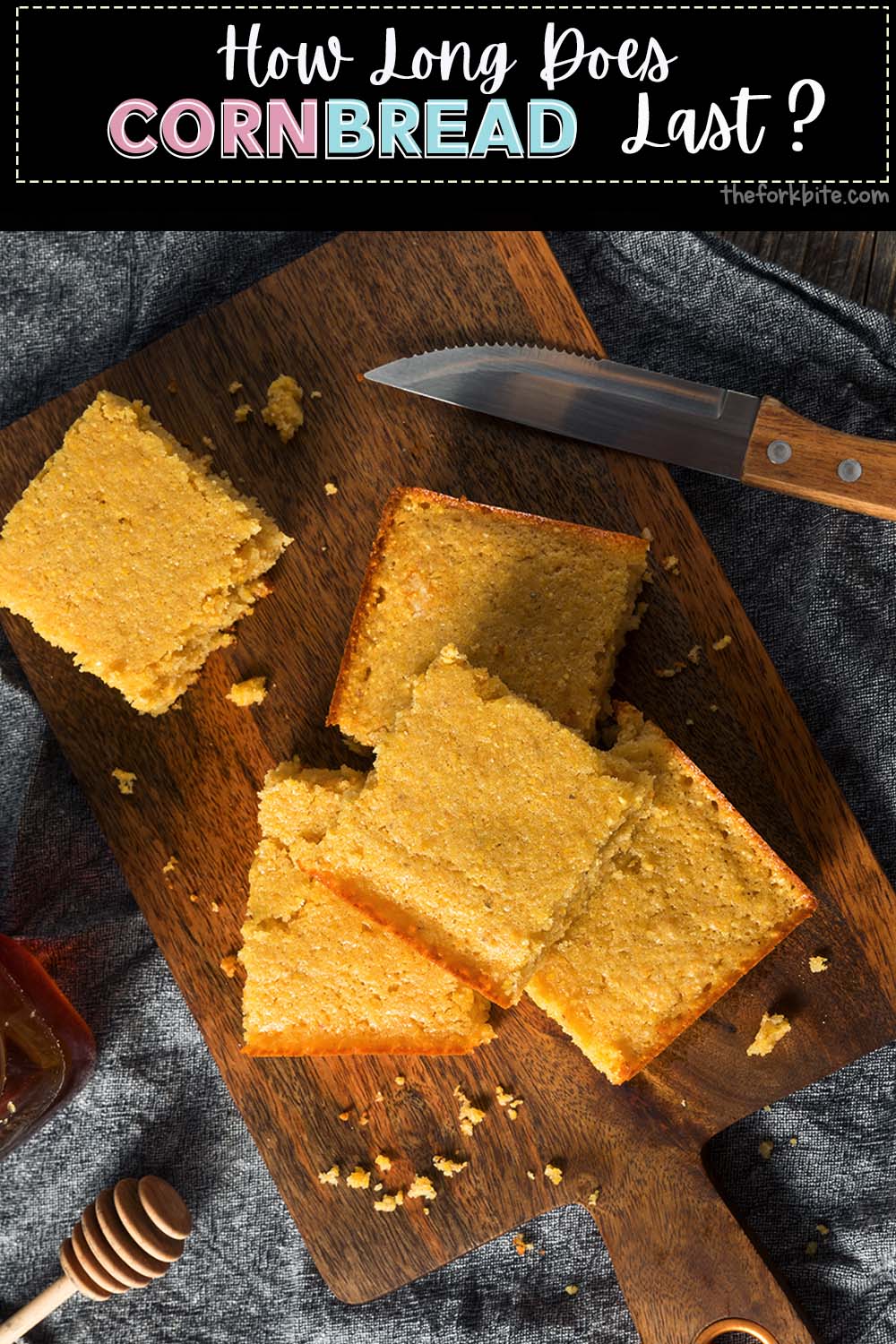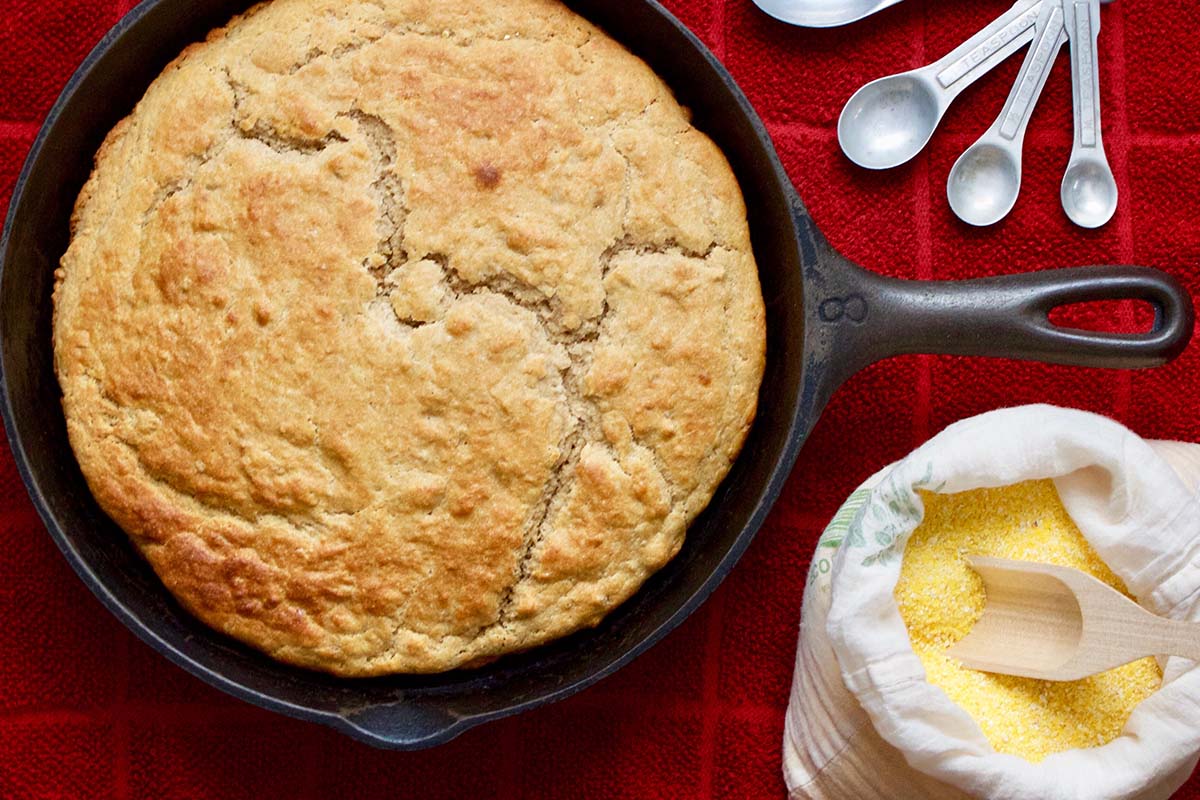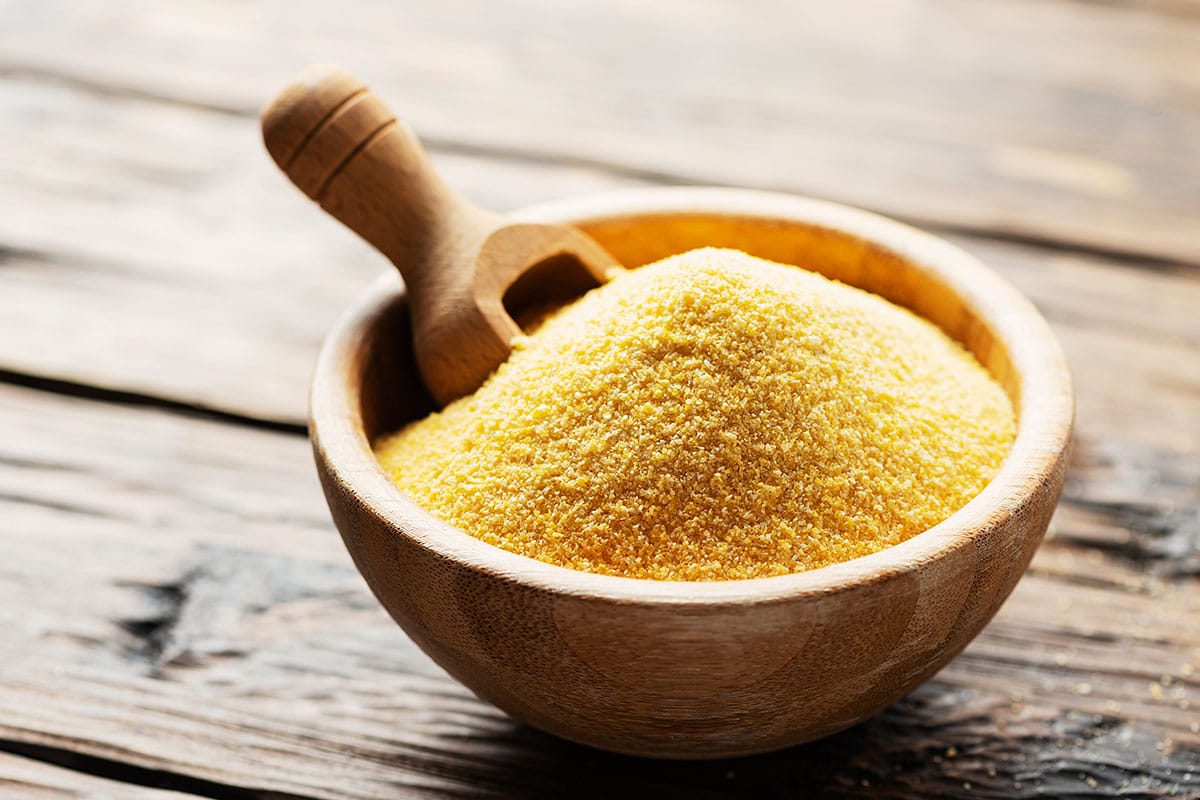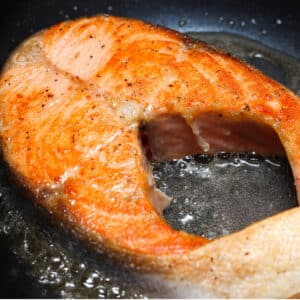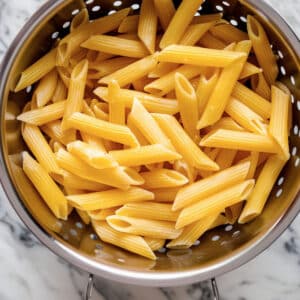When I was a kid, my mother would make cornbread, and the whole family loved it. I remember watching as she made it, taking in every little detail.
Now I am a mother myself, and I make this delicious snack for my own children, who love it as much as I still do. My partner likes it too, especially as an accompaniment to a bowl of chili.
Jump to:
Regular readers will know that I am not one for wasting food, so storing it properly, whether it's store-bought produce or homemade fare, has become second nature to me.
So, if there is anything you would like to know about how to store cornbread to keep it fresh and extend its shelf life, you're in the right place.
I'm more than happy to share a few tips with you on the subject.
Related: What goes well with cornbread
How long does cornbread last?
It doesn't usually last very long after I've made it, but sometimes there are leftovers, and rather than throwing them away, I have learned how best to store them and for how long.
Normally, cornbread lasts around two days when left out. The best way to store cornbread is to cover it with cling wrap and place it in an airtight container before storing it in the fridge.
3 ways on how to store cornbread
Over the years, I've learned many tricks concerning storing and extending the shelf life of all sorts of food products, including how long is cornbread good for.
Here are the best ways of keeping it nice and fresh for as long as possible.
1 Storing outside the fridge at room temperature
- If you don't have any room in your fridge for cornbread leftovers, you don't necessarily have to throw them away. I have found that they will remain fresh for up to two days, and that is without any preservative.
But, it would be best if you didn't leave cornbread exposed to the open air for too long.
Put it into an airtight container. It not only stops the air from getting to it.
It also keeps it safe from any insects, something that is particularly useful if you take it with you on a camping trip.
2 Does cornbread have to be refrigerated?
As with most foods, including cornbread, the best place for keeping them fresh for a short time is in your refrigerator.
The only thing you need to bearing mind is the moisture inside the fridge. But I'll give you a tip on dealing with that in a moment.
Suffice it to say that appropriately stored; cornbread will remain fresh for up to 7 days in your fridge.
Top tip:
- Before refrigerating cornbread, wrap it in BPA free food-friendly cling wrap.
- As well as protecting the cornbread from exposure to the air, it also helps to protect it from any excess moisture in the fridge.
Because the film is transparent, you can also notice if it's going off should you mistakenly leave it in your fridge for too long.
3 Storing cornbread in your freezer
If you've got lots of leftovers or you've made a large batch of cornbread, you might want to keep it for longer than a couple of days, so you'll be pleased to know that you can freeze it for up to two months.
It is important, however, to ensure that it is kept at a constant temperature of 0°F.
You should take precautions to protect the cornbread from freezer burn, and the best way of doing this is to wrap it in aluminum foil and then place it into a Ziploc bag.
I also find that it's a good idea to store wrapped and bagged cornbread in a container. It will help to protect it from being accidentally squashed when you're rummaging about it in your freezer.
Storing cornmeal
If you enjoy making cornbread at home, you've probably got a stock of its primary ingredient - cornmeal.
This, too, needs to be kept in good condition so that when you come to start making a new batch of cornbread, your stored cornmeal is still at its best.
How long you can keep it is dependent on its condition.
- In an unopened bag or packet, cornmeal will last for up to one year. However, after opening, you should use it within four months.
Several things can shorten its shelf life, so it's crucial to rely on your senses to check it out before you use it; after all, you don't want to end up giving anyone food poisoning.
Cornmeal should be kept in a cool, dry place well away from any heat sources.
Unfortunately, cornmeal is the perfect place for insects to hide and lay their eggs which may hatch. A warm environment will only encourage them.
A dry atmosphere is important as you need to keep moisture at bay. If it is present, the cornmeal will go moldy, and you will have no choice other than to ditch it.
To extend its shelf life for as long as possible, it is recommended to transfer it into an airtight container.
Signs that cornmeal has turned rancid
No matter what you do, cornmeal will eventually turn rancid. People used to think that cornmeal didn't go bad and that only cornbread did. The truth of the matter is that they can both go off.
Cornmeal is the product of whole-grain kernels, which will become rancid, so what chance has cornmeal got?
But that's not all. You probably know that packaged cornmeal contains canola oil, and this type of oil is known to spoil faster than most, if not all.
When cornmeal starts to turn, its smell changes. If you notice a musty or strange type of odor, then you should throw it away.
When cornbread turns stale
There are a couple of signs to warn you cornbread has gone bad, but we will come to those in a moment.
First, you should be aware of the warning sign that indicates it is about to go off, and that is when it becomes stale.
We all know what stale bread is like, and cornbread is no different. You can get away with eating it, but its flavor will have deteriorated.
Signs that cornbread has gone bad
Once the staleness has set in, cornbread will begin to spoil if it is not binned, which you can detect through the following signs.
1 When mold appears
One of the signs that your cornbread has become rotten is when mold begins to form. Look out for any patches that look darker or greenish. If you spot any, it means you need to throw the cornbread away. It is no longer safe to eat.
2 When moisture forms
Cornbread will have a certain amount of moisture. A complete absence of moisture means that it's gone stale.
But if you touch it, it feels sticky; it's a clear indicator that it's gone rotten and should be thrown away.
3 When it starts to smell sour
If your cornbread develops a putrid smell, it's a sure sign that it has gone off. Don't try and eat it. Put it straight in the bin.
The good news is that if you store your cornbread per the tips I've given you above, it's great to eat at any time of the year, and it partners so well with many other types of food.

